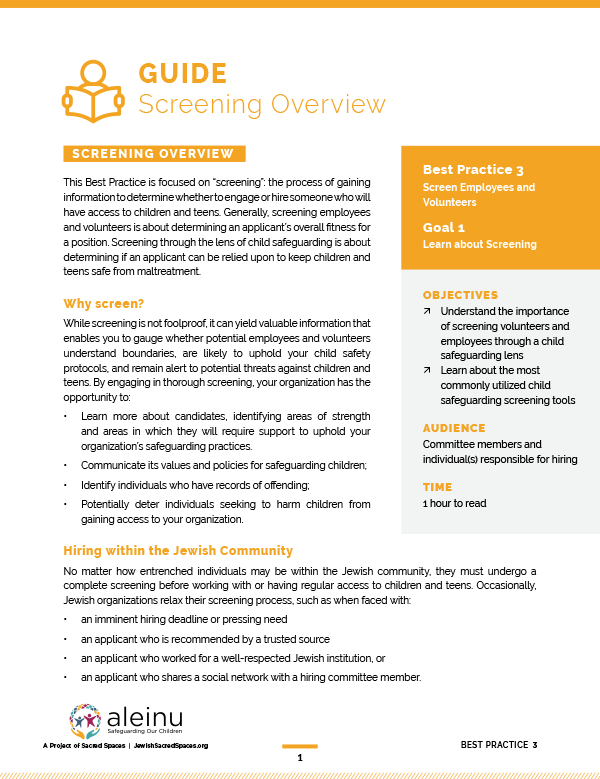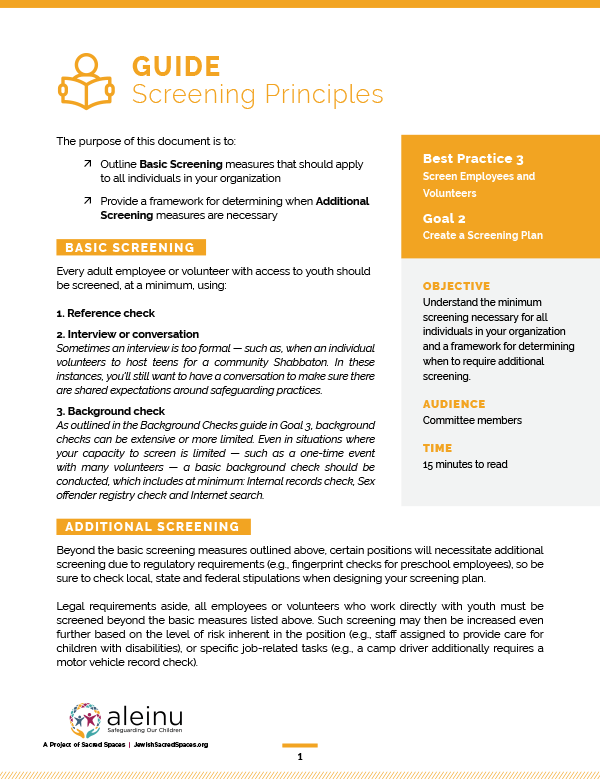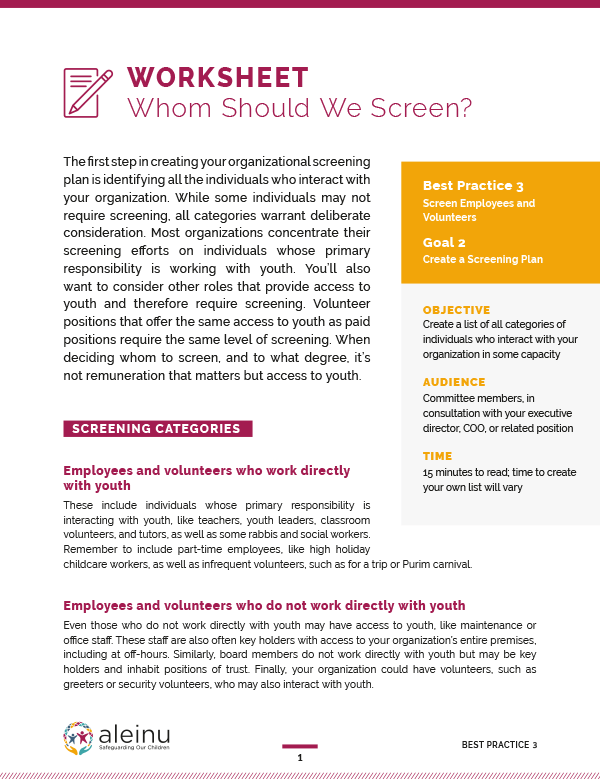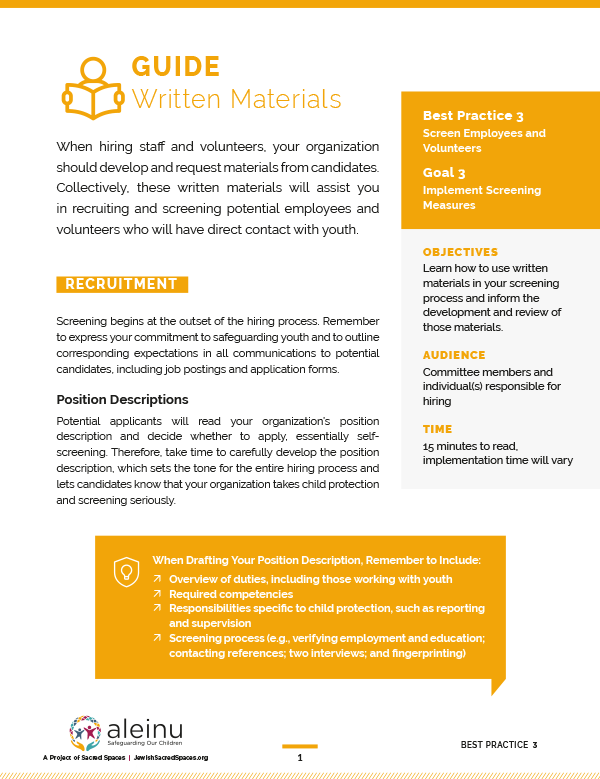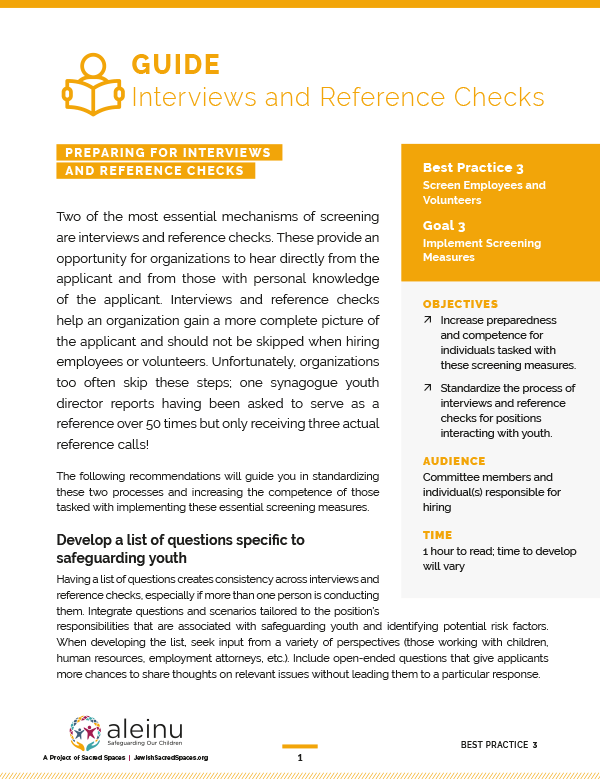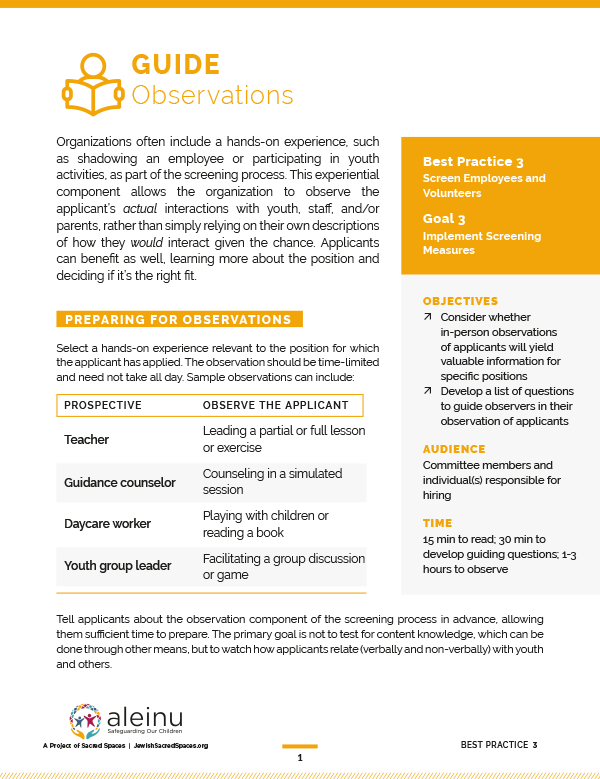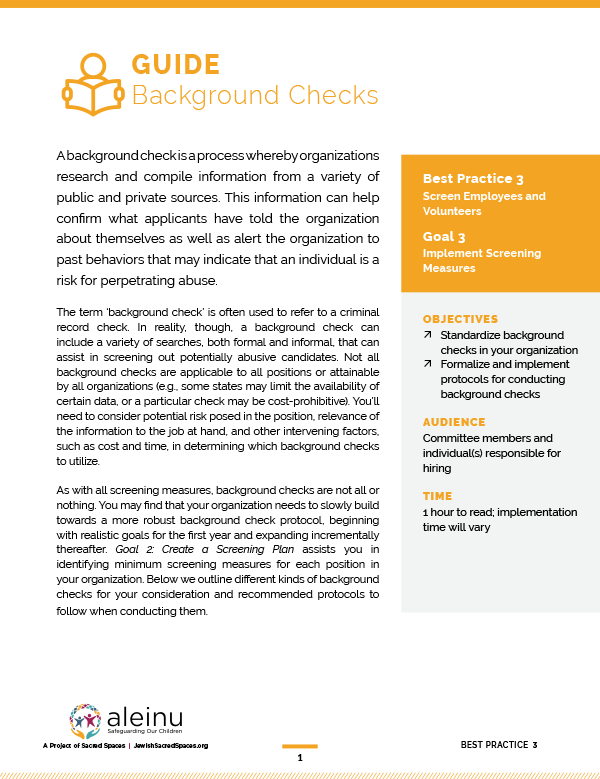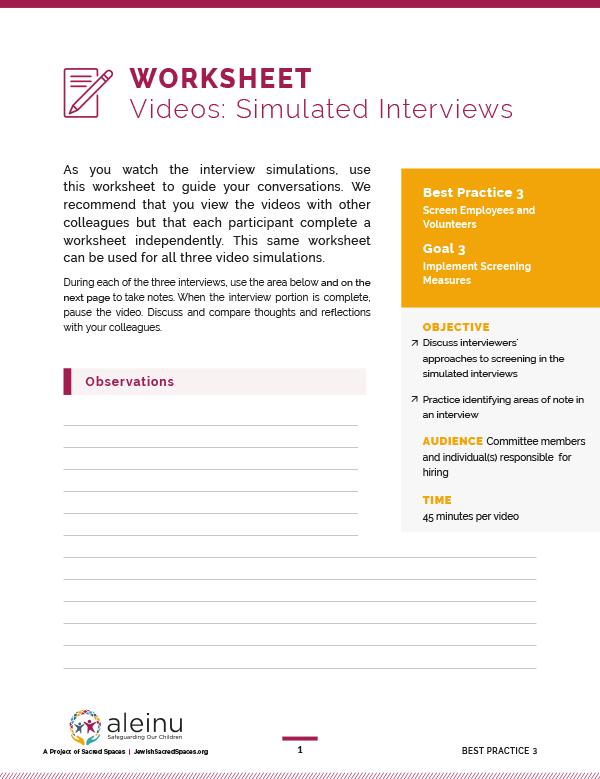Screen Employees and Volunteers
Who is wise? One who foresees the future consequences of one’s acts. (Babylonian Talmud Tamid 32a)
Anchored in the Talmudic maxim describing a wise person as one who foresees the future consequences of their actions, this Best Practice will help your organization develop a level of proactive vision as a central component to welcoming new adults into your organization. Although your organization may already screen potential employees and volunteers, this Best Practice will help you incorporate the lens of youth safeguarding into the steps of your screening and hiring processes.
Please Note: This Best Practice provides information on how to maximize the effectiveness of screening for safeguarding youth. However, local and state laws related to the collection of screening information, its use for hiring decisions, and the storage and disposal of such information may impact when and how specific screening measures can be applied. We recommend that you also work closely with an attorney to ensure that your protocols are legally compliant.
Learn about the importance of screening and more commonly used screening methods.
Identify the roles that require screening within your organization, and select your screening methods.
Put your screening plan into action.




